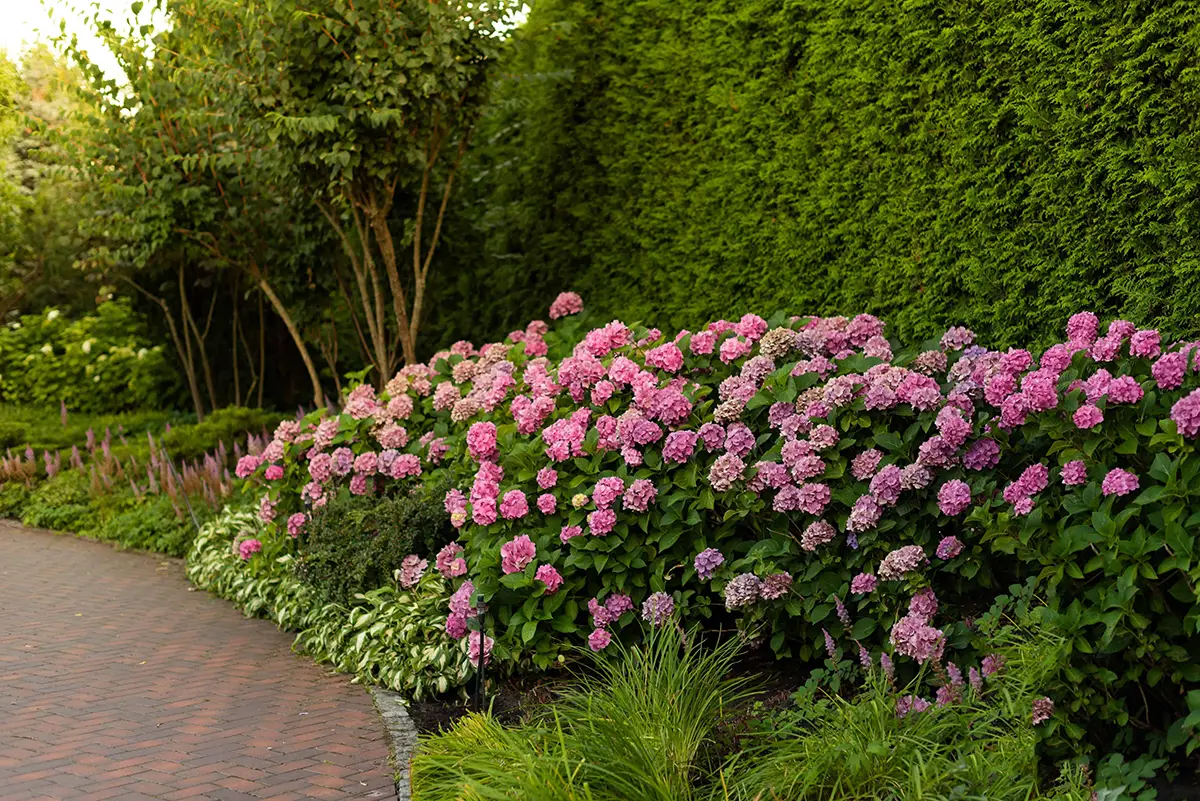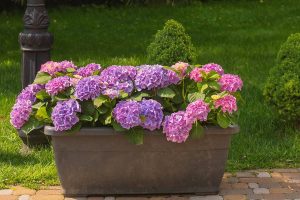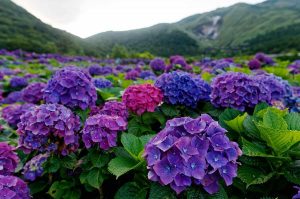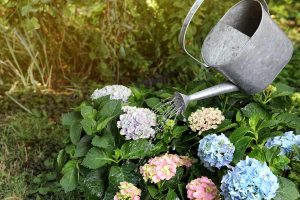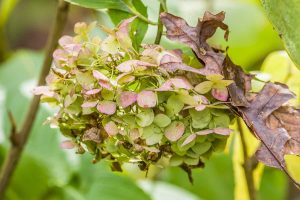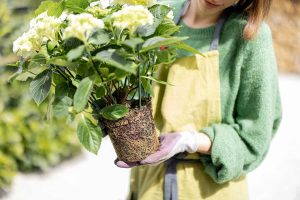You’ve just planted a row of beautiful hydrangeas in your garden, but the space around them looks a bit bare. Complementing your hydrangeas with the right companion plants can enhance their beauty and create a more vibrant garden. Learn which plants pair well with hydrangeas to create a stunning and cohesive landscape that will impress all year round.
Table of Contents
Hydrangea Companion Plants
Hydrangeas, with their lush blooms, can be complemented beautifully by a variety of companion plants. These companions can enhance the aesthetic appeal and improve the growth environment for hydrangeas.
Hostas
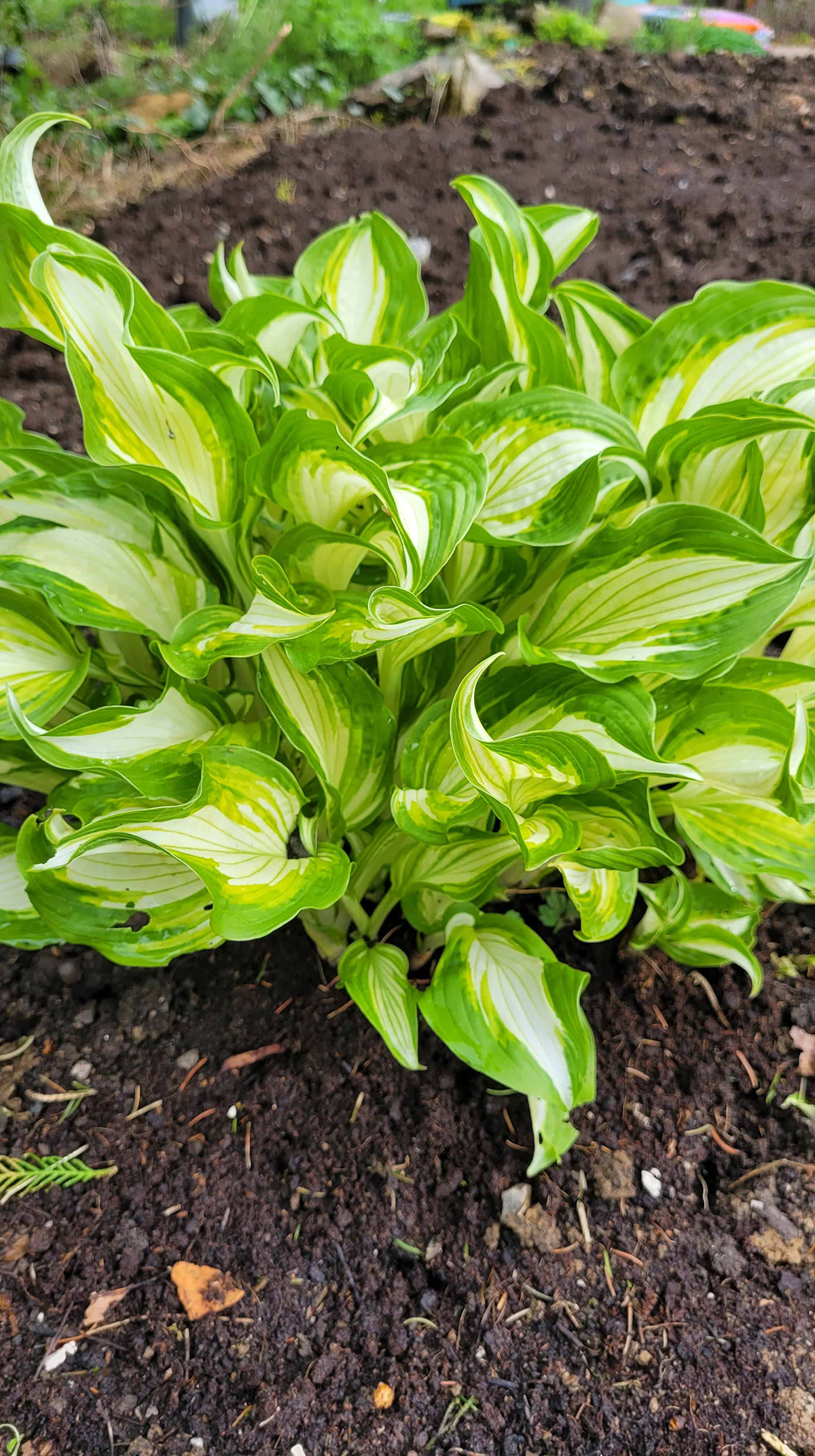
Hostas, with their broad, textured leaves, are excellent companions for hydrangeas. Their foliage contrasts well with hydrangeas’ blooms. Hostas thrive in similar conditions: partial to full shade and moist soil. They offer a range of colors, from deep green to variegated patterns, adding visual interest. Hostas also help to keep the soil cool and retain moisture, which benefits hydrangeas.
Ferns
Ferns provide a delicate, feathery texture that complements the bold flowers of hydrangeas. They thrive in the shade and require similar soil conditions. Varieties like the Japanese Painted Fern or the Maidenhair Fern are good choices. Ferns help maintain moisture in the soil, benefiting hydrangeas during dry spells. Their green foliage provides a lush backdrop, enhancing the hydrangea’s vibrant colors.
Azaleas
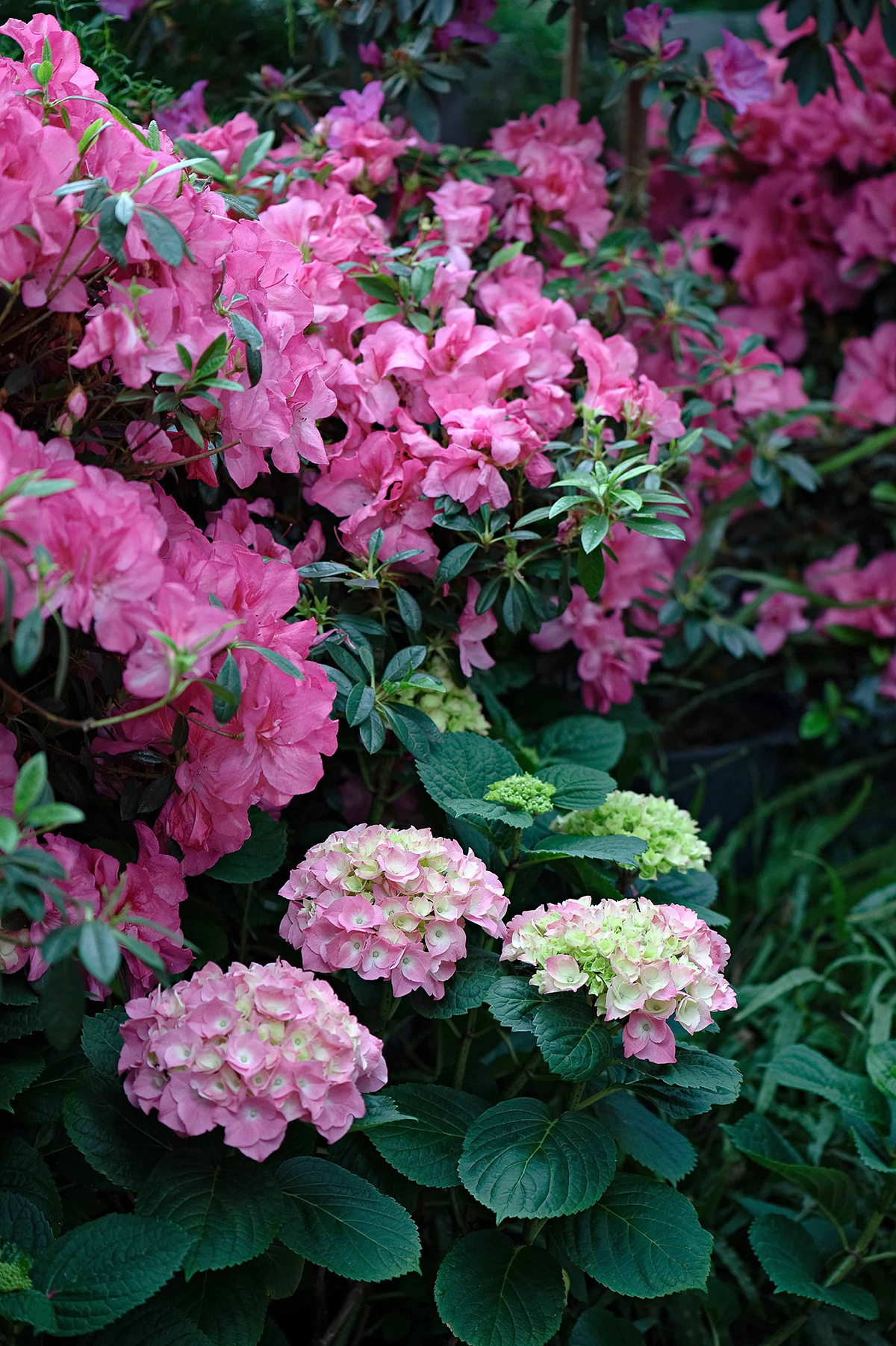
Azaleas are another excellent choice as companion plants. They prefer acidic soil, similar to hydrangeas. Their seasonal blooms add color and interest when hydrangeas are not flowering. Azaleas thrive in partial shade, which suits areas where hydrangeas grow. Their overlapping bloom periods can create a continuous display of flowers from early spring through summer.
Daylilies
Daylilies offer a burst of color during their flowering season, complementing hydrangeas’ blooms. They are hardy and adaptable, growing well in sun or partial shade. Daylilies require similar soil moisture levels and can help cover the ground, reducing weeds around hydrangeas. Their long, slender leaves add a different texture, enhancing the garden’s visual appeal.
Heucheras (Coral Bells)

Heucheras, known for their vibrant foliage, are perfect companions for hydrangeas. Their leaves come in various colors, from deep burgundy to lime green. They prefer partial shade and well-drained soil, similar to hydrangeas. Heucheras’ low-growing habit makes them excellent for filling gaps in the garden, adding color and texture without overshadowing hydrangeas.
Astilbes
Astilbes bring feather-like plumes that add vertical interest and texture. They thrive in moist, well-drained soil and partial shade—ideal for areas where hydrangeas grow. Their blossoms come in shades of white, pink, and red. Astilbes not only enhance the visual appeal but also attract pollinators, supporting garden biodiversity.
Japanese Forest Grass (Hakonechloa)
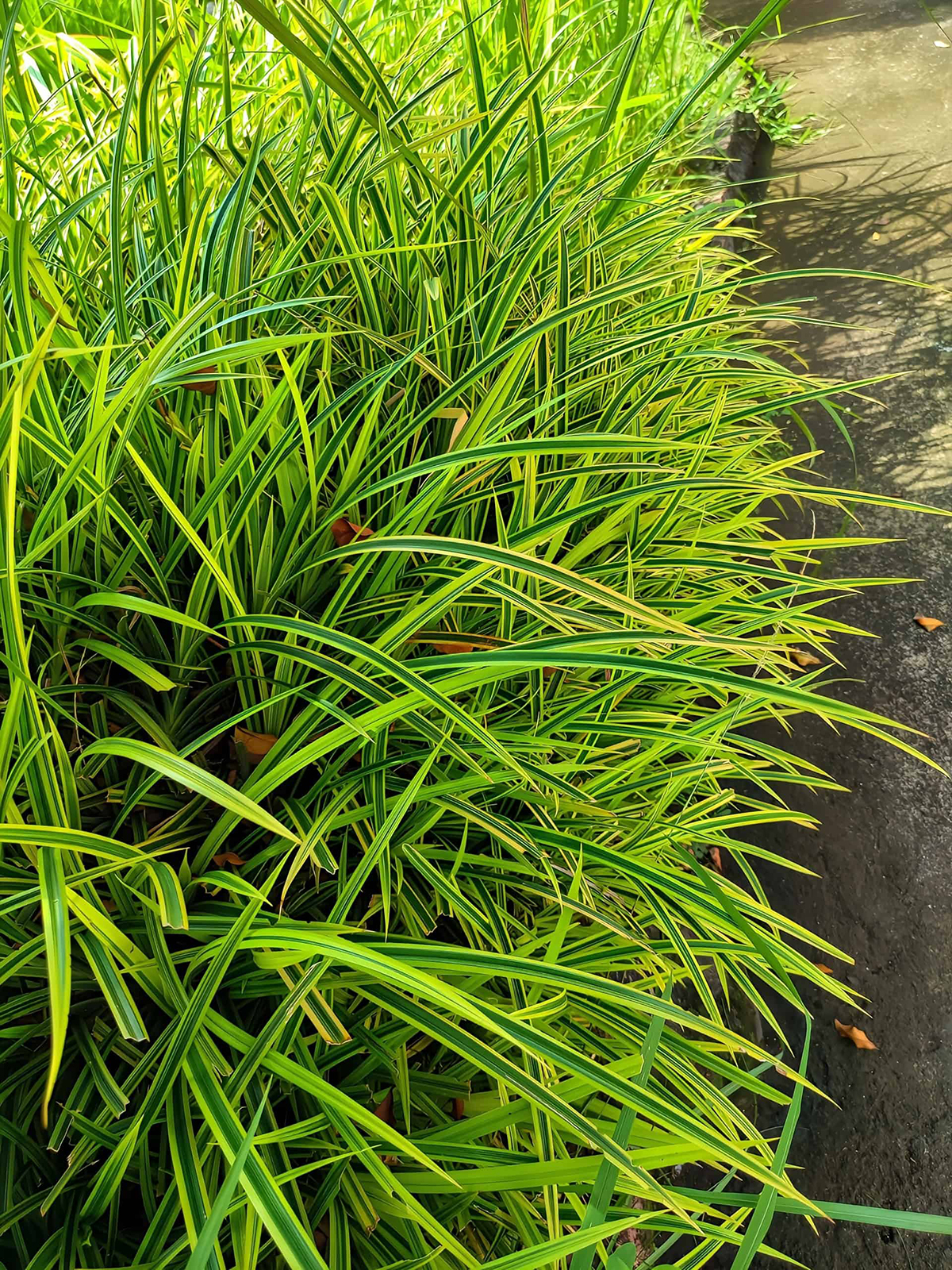
Japanese Forest Grass, with its graceful, arching leaves, pairs well with hydrangeas. This ornamental grass thrives in partial to full shade and prefers moist, well-drained soil. Its foliage, often variegated in green and gold, provides a striking contrast to hydrangea blooms. Japanese Forest Grass adds a flowing, soft texture that complements the boldness of hydrangeas.
Rhododendrons
Rhododendrons are excellent companions, thriving in the same acidic soil as hydrangeas. Their evergreen foliage provides year-round interest, and their spring blooms overlap with hydrangeas, extending the flowering season. Rhododendrons grow well in partial shade, making them suitable for planting alongside hydrangeas. Their dense growth can also provide a windbreak, protecting hydrangeas.
Boxwoods
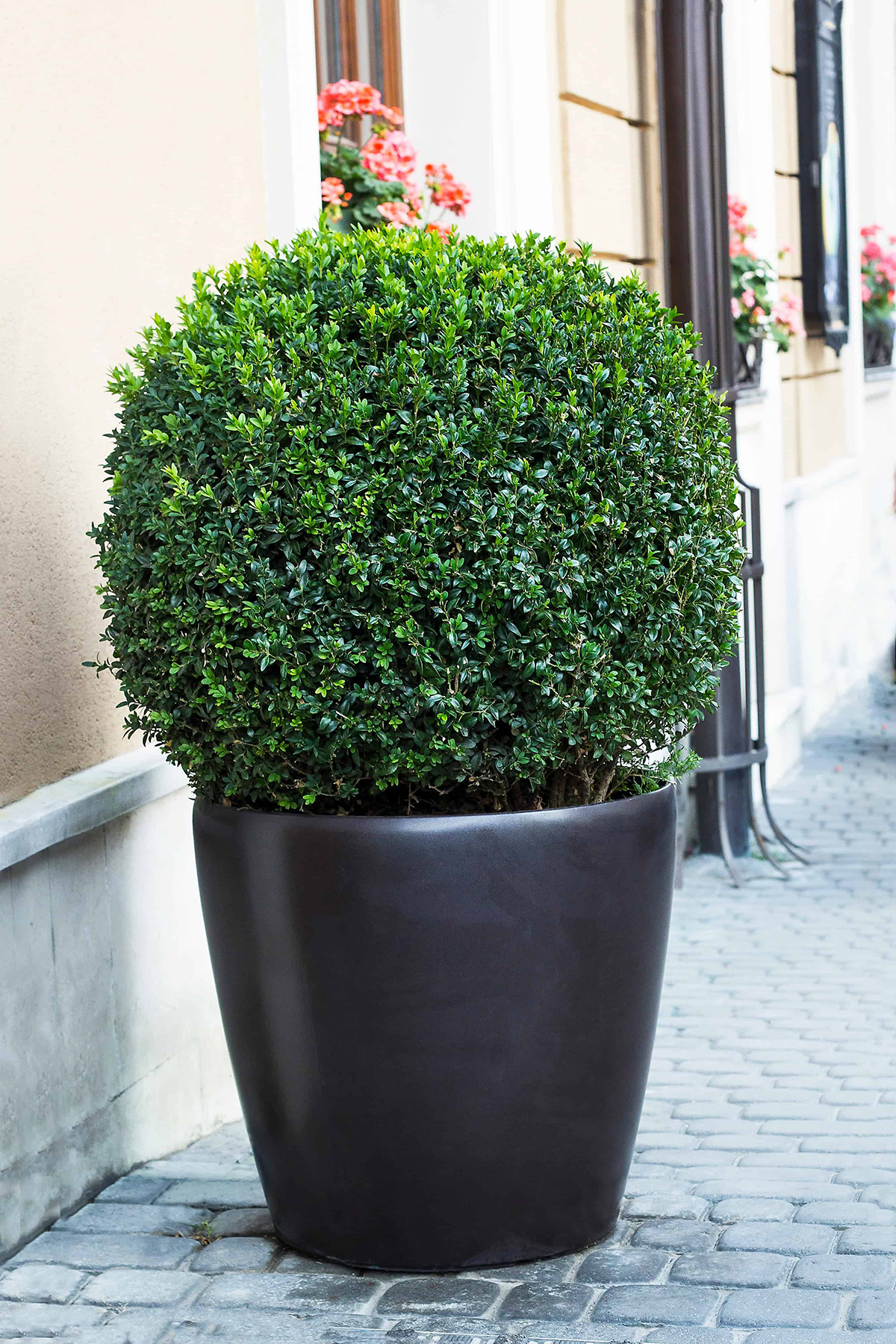
Boxwoods offer structure and evergreen foliage, making them ideal companions. They thrive in a variety of soil types and prefer partial shade to full sun. Boxwoods can be easily shaped, providing a neat backdrop for hydrangeas. Their dense foliage helps to protect hydrangeas from wind and creates a formal garden look.
Liriope (Lilyturf)
Liriope, also known as Lilyturf, is a versatile ground cover that complements hydrangeas. It thrives in partial shade and moist, well-drained soil. Its grass-like foliage and purple flower spikes add color and texture beneath hydrangeas. Liriope helps to suppress weeds and retain soil moisture, benefiting hydrangeas during dry periods.
Tiarella (Foamflower)
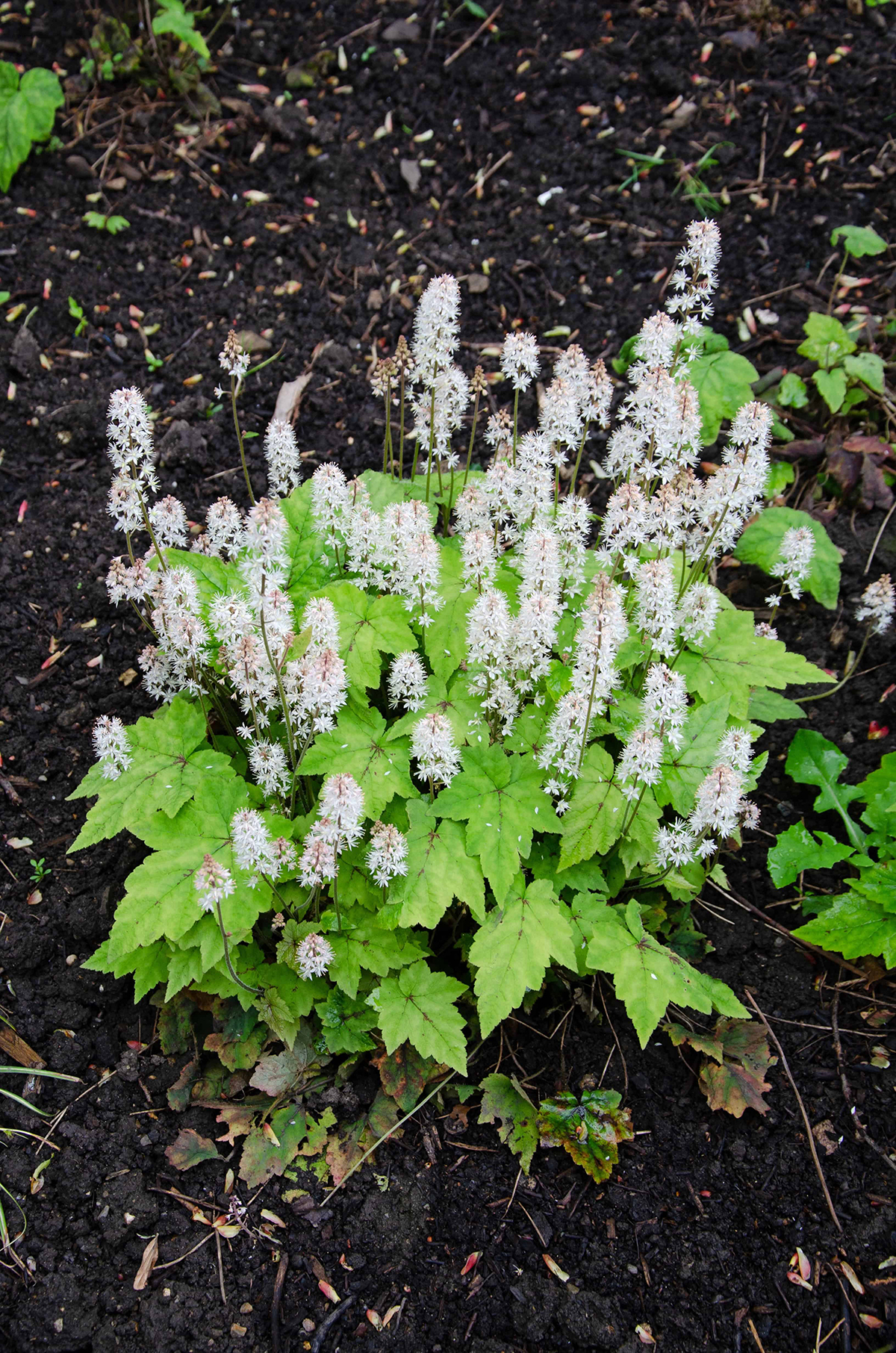
Tiarella, or Foamflower, provides lovely ground cover with its delicate flowers and attractive foliage. It prefers partial shade and moist, well-drained soil, similar to hydrangeas. Tiarella’s blossoms appear in spring, adding early interest to the garden. Its leaves, often marked with dark veins, provide a unique texture and color contrast to hydrangeas.
Brunnera (Siberian Bugloss)
Brunnera, known for its heart-shaped leaves and blue flowers, makes an excellent companion for hydrangeas. It prefers partial shade and consistently moist soil. Brunnera’s foliage, often silver or variegated, adds brightness and contrast in the garden. The small blue flowers in spring provide a subtle yet beautiful complement to hydrangeas’ larger blooms.
Columbines
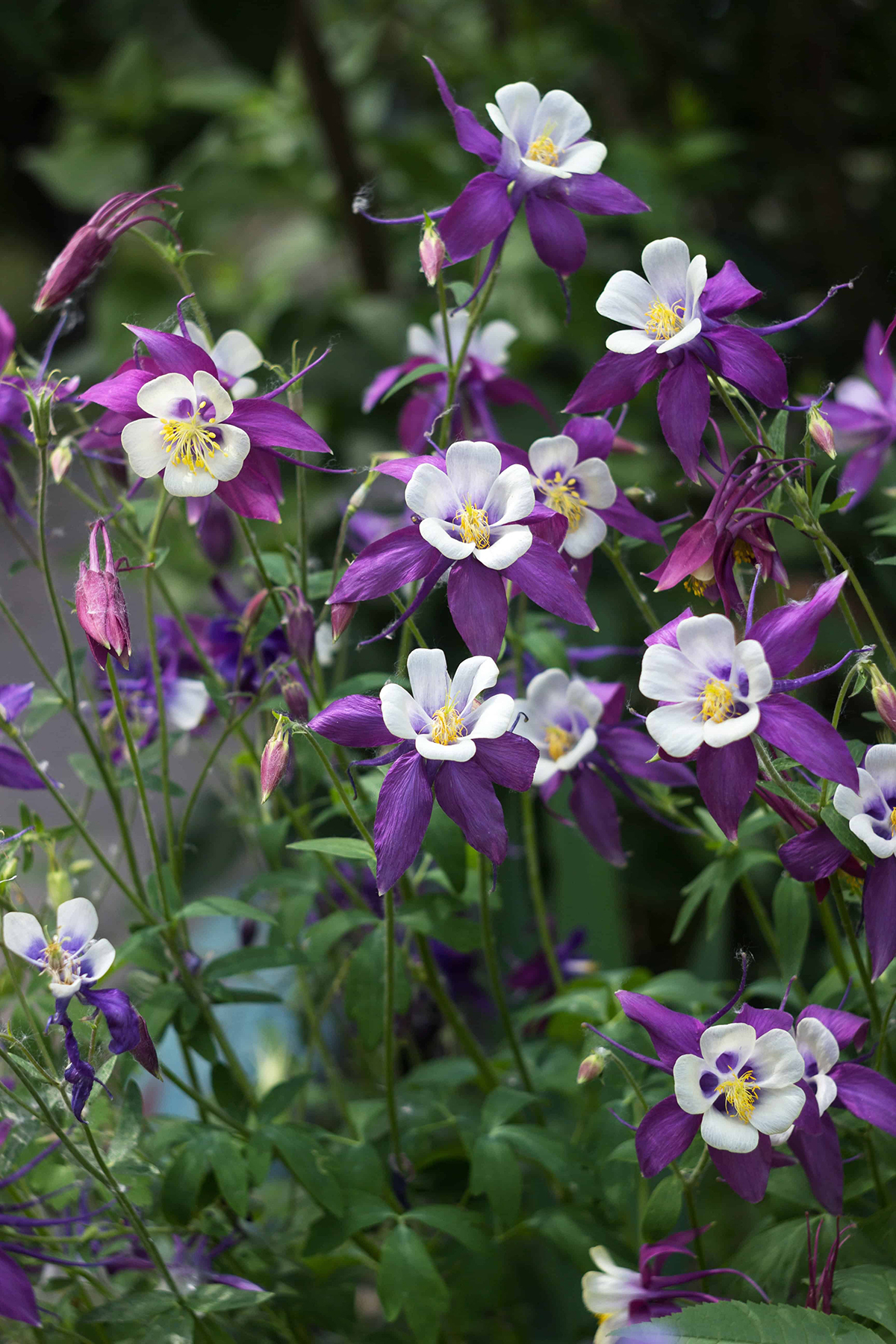
Columbines bring delicate, nodding flowers that complement the bold blooms of hydrangeas. They prefer partial shade and well-drained, moist soil. Columbines’ unique flower shapes and variety of colors add charm and diversity in a garden with hydrangeas. Their blooming period in late spring can overlap with hydrangeas, creating a harmonious display of flowers.
Ligularia
Ligularia stands out with its large leaves and tall flower spikes, making it a striking companion for hydrangeas. It thrives in moist, shady conditions, similar to hydrangeas. Ligularia’s bold foliage and bright yellow to orange flowers add visual interest. This plant also helps to retain soil moisture and provide shade, creating a favorable environment for hydrangeas.
Solomon’s Seal

Solomon’s Seal, with its arching stems and bell-shaped flowers, pairs well with hydrangeas. It thrives in partial to full shade and prefers moist, well-drained soil. Solomon’s Seal adds an elegant, woodland feel to the garden. Its foliage provides a graceful contrast to hydrangeas, and its flowers add subtle beauty in late spring to early summer.
